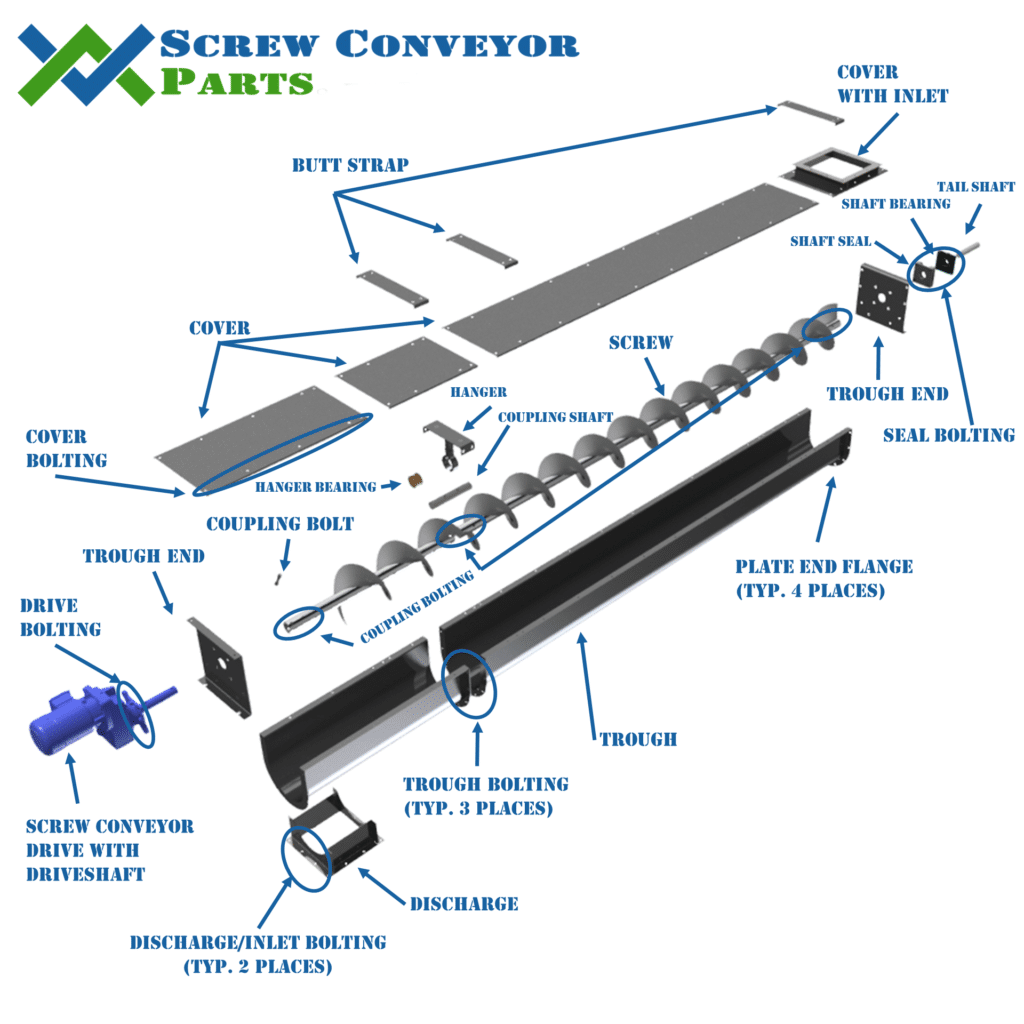A screw conveyor, also called an auger is a mechanical conveying device for powder bulk solids. At the heart of the screw conveyor is the screw. (See here for information on screws) The screw is rotated by the drive and pushes the conveyed material forward 1 pitch with every revolution. The first recorded use of a screw conveyor was by Archimedes around 250 B.C. This basic design is still used today and can be seen in action in a variety of applications and industries.

So why Choose a Screw Conveyor?
The screw conveyor offers a lot of advantages in many different powder bulk material handling applications.
- Versatility – The screw conveyor can be adapted to fit almost any conveying application, including feeding, thermal applications, corrosive materials and mildly abrasive materials.
- Containment – The screw conveyor can be made dust tight to fully enclose the conveyed material.
- Compact – The screw conveyor is compact and a perfect solution for processes that have lots of equipment in a small space.
- Safety – The screw conveyor is fully enclosed and therefor operator exposer to both moving parts and hazardous materials inside is minimized.
- Initial Cost – The screw conveyor has the lowest initial costs of any conveying equipment available.
- Long term reliability – The screw conveyor can be specially designed to offer a long and maintenance free life.
- Replacement parts – Thanks to the standardization of CEMA, screw conveyor parts are readily available and very cost effective. (we have them here)
So what are the limitations of screw conveyors?
Although there are a lot of advantages to using a screw conveyor, some limitations do exists. There are many more limitations for specific applications than these shown below, but this is a good start.
- Large capacities – At some point, about 30,000 CFH or less, the screw conveyor is just not practical and another technology is preferable.
- Long distances – In many applications a screw conveyor can convey up to hundreds of feet before it becomes impractical, but for some applications like food grade, inclines, or abrasive materials the distance can be around 20ft.
- Fragile materials – The inherent tumbling of the conveyed material a screw conveyor causes and the pinching of the material between the screw and the trough make conveying fragile material impracticable.
- Sticky materials – A screw conveyor has a lot of sharp corners and flat surfaces for sticky material to get hung up on.
- Sanitary and food grad applications – Until the flow rates get to be above about 500 CFH, the screw conveyor is not ideal for sanitary applications due to the cost to polish all the steel on the screw.

